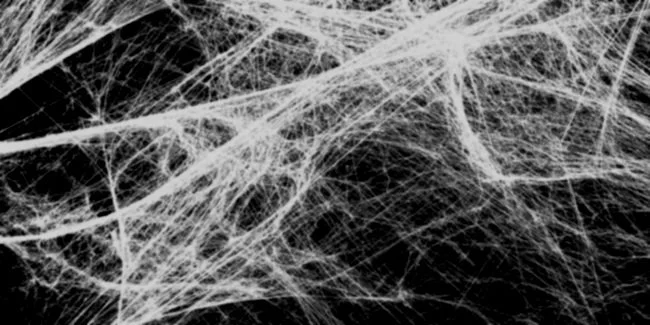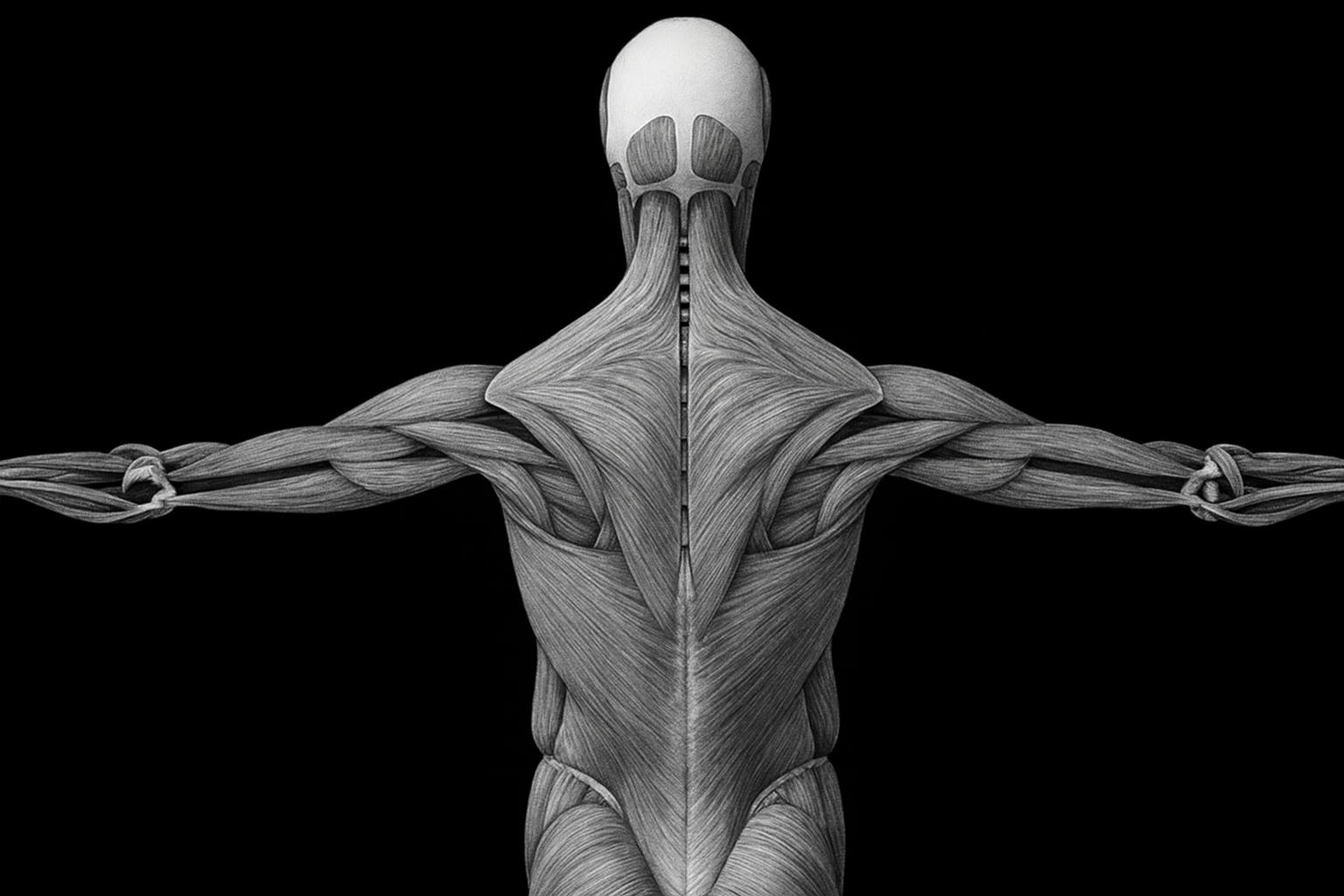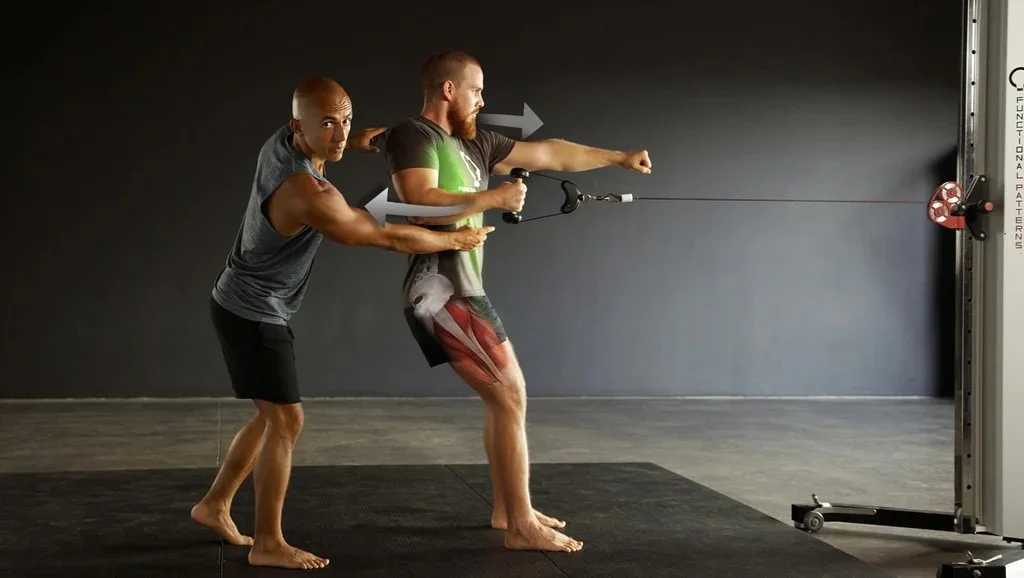
Fascia: The Missing Link Between Pain, Posture and Performance
Fascia is the connective tissue that links every muscle, bone, and organ in your body — forming a living web that controls how you move, feel, and function. When fascia becomes tight or dehydrated, it can cause pain, fatigue, and poor posture. At Functional Patterns Melbourne, we focus on restoring healthy, adaptable fascia through precise movement training — helping you move efficiently, relieve chronic pain, and rebuild your foundation for lasting strength and wellbeing.
What Is Fascia — and Why It Matters
Fascia is a continuous web of connective tissue made of collagen that wraps around every muscle, organ, nerve and bone in your body.
It’s not just “packing material” — it’s a dynamic, responsive system that communicates with your nervous, immune and muscular systems in real time.
Through a process called mechanotransduction, fascia senses movement and pressure, sending feedback to the brain and influencing posture, coordination and pain levels.
Fascia supports:
Postural alignment and balance
Lymph flow and circulation
Tissue repair and immune defence
Emotional stability and body awareness
Efficient movement and energy production
When Fascia Becomes Dysfunctional
Healthy fascia slides and glides easily between tissues. But dehydration, poor posture, stress and inflammation can make it stiff, sticky or scar-like. When this happens, movement becomes restricted and the body begins to compensate — creating strain, pain and fatigue.
Common signs of fascial dysfunction:
Persistent stiffness or localised pain
Fatigue and sluggish recovery
Postural distortion and tightness
Reduced mobility and coordination
Heightened stress or anxiety
Fascial fibrosis (a hardening or drying of connective tissue) can trigger chronic inflammation, increased pain sensitivity and even contribute to conditions such as fibromyalgia and chronic fatigue syndrome.
Fascia and Movement Mechanics
Your fascia connects muscles into myofascial chains — continuous lines of tension that transmit force through the body. These chains make complex, athletic movements like walking, running, throwing and jumping possible.
For example, the latissimus dorsi, gluteus maximus and hamstrings link together through fascia, helping generate rotational force when you walk or run.
When fascia is healthy, these chains distribute tension evenly and the body moves efficiently. But when movement patterns break down — through sitting, stress, or isolated strength training — fascial tension becomes unbalanced, leading to pain and fatigue.
The Connection Between Fascia, Emotions and the Nervous System
Fascia is rich in sensory nerve endings that constantly communicate with your brain.Your posture affects how you feel — and how you feel affects your posture. When fascia tightens, it can amplify tension and stress signals, influencing emotional states and fatigue.
By restoring alignment and fluid movement, you can improve both physical comfort and emotional stability — two sides of the same coin.
Fascia, Immunity and Chronic Inflammation
Fascia also helps regulate your immune and lymphatic systems. When it becomes dry or immobile, lymph flow slows down, metabolic waste builds up, and inflammation increases. Over time this can create a cycle of swelling, tension and pain.
Fibrosis — or the thickening of fascia — often appears in people with long-term inflammatory conditions such as fibromyalgia, COPD, and diabetes, further linking fascial health to overall immunity.
Fascia and Chronic Fatigue
When fascia loses elasticity, it makes every movement more energy-intensive. Your body must work harder for simple tasks, and the nervous system begins interpreting this as fatigue.
Dysfunctional fascia can also reduce oxygen delivery and limit lymphatic drainage — both of which contribute to tiredness and pain.
Rehydrating fascia through correct movement helps restore energy and resilience.
Restoring Healthy Fascia Through Functional Movement
At Functional Patterns Melbourne, we focus on re-educating movement so fascia can perform as designed. Our training is based on the four primal human patterns — standing, walking, running and throwing — to help your body function as a single, integrated system.
By improving fascial hydration, decompression and coordination, we help you:
Relieve chronic pain and stiffness
Rebuild posture and balance
Improve energy and recovery
Enhance strength and athletic ability
Isolation vs Integration
Traditional fitness methods often isolate muscles — squats, deadlifts and static stretches train the body in segments rather than as a system. Fascial training integrates those parts back together.
When muscles and fascia operate as one continuous chain, movement becomes efficient, posture improves and pain decreases. This is the foundation of Functional Patterns: training the body the way it evolved to move.
Ready to Rebuild from the Inside Out?
If you’re struggling with:
Chronic pain or stiffness
Fatigue and inflammation
Postural imbalance
Stress or tension
…it’s time to look deeper — at your fascia.
Book a functional movement and fascia assessment today and start retraining your body to move and feel better, naturally.





